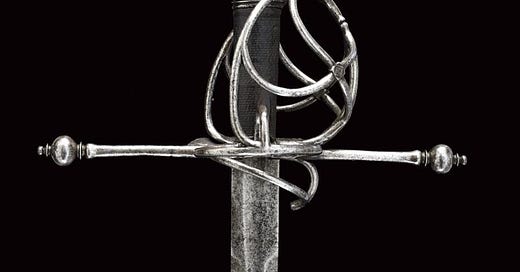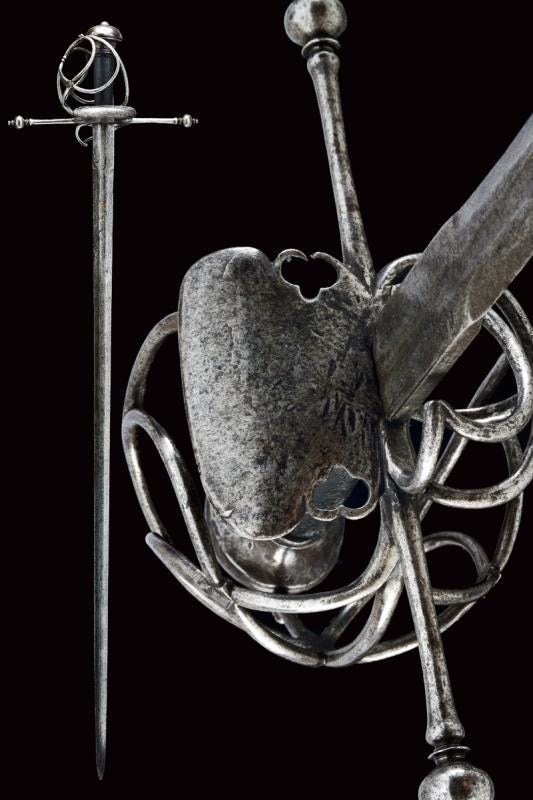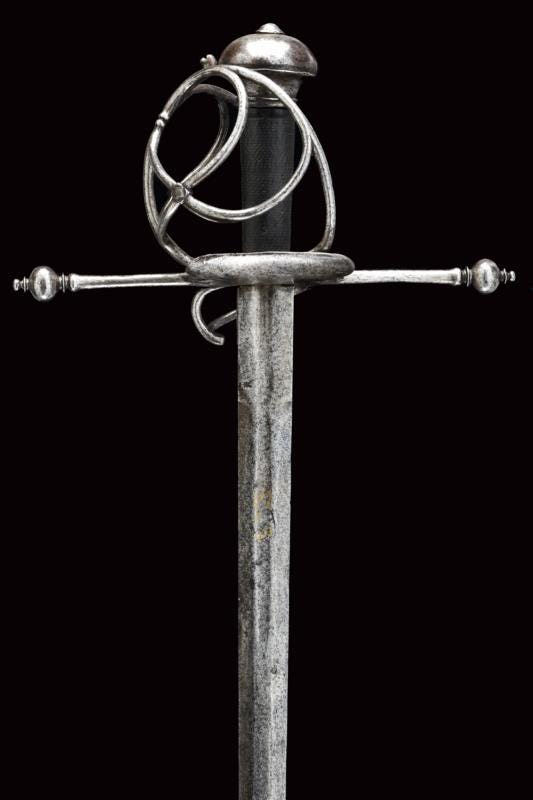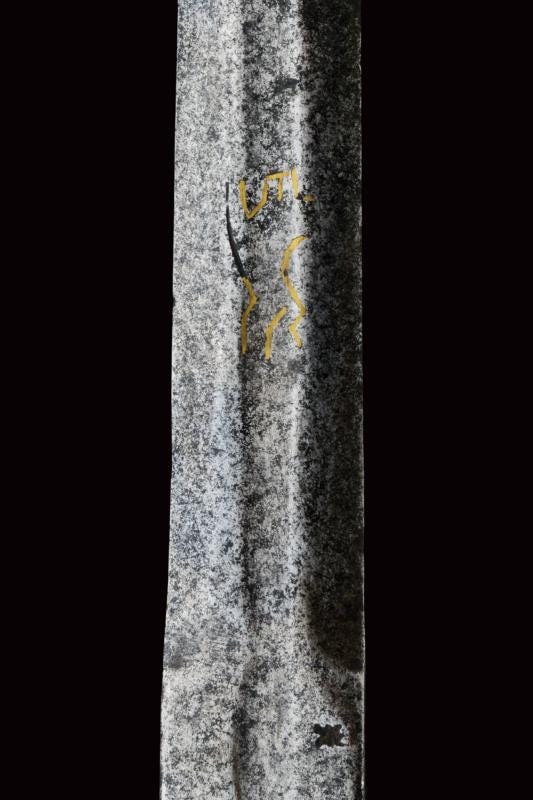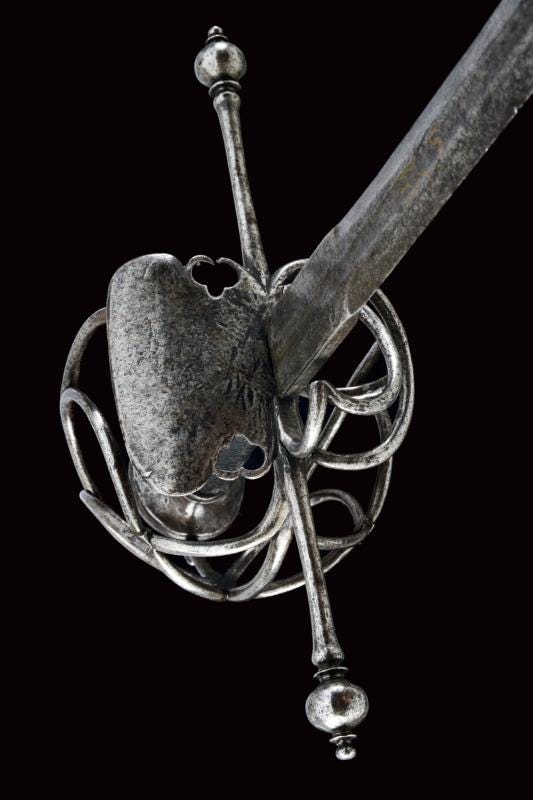I want to use a sword I saw auctioned by Czerny's Auction House to talk about sword classifications. Well, a slight whimsical and a bit exaggerated look to showcase the problems we have with any rigid classifications of swords.
Here, we see that the basket hilt has a thumb ring, the pommel is mushroom-shaped, and the wooden grip is covered with leather. A look at the blade shows a relatively narrow straight double-edged blade of hexagonal section, fullered at the base and with a rectangular ricasso. A Passau Wolf mark is inlaid in brass.
Typology Considerations
We see a basket hilt in a style observed on North European dussacks (Type D, according to Per Terje Norheim proposed typology). The Digital Museum of Norway has a lot of pictures of dussacks, some with straight blades (all identified as tessaks by the museum). So from this perspective, this is a dussack.
Fencing Considerations
Looking at Meyer dussack fencing style, a curved blade is needed to perform some non-straight thrust moves. If functionality dictates the need for a dussack to have a slight curved blade, then this is not a dussack. But how about a Meyer rapier? I see no reason why it wouldn’t be usable in this role. In fact, I believe it would be excellent in this role. As we all know, Meyer rapier is just a term for a sidesword, so then this is a sidesword.
Hilt Considerations
While we have a narrow, straight double-edged blade of hexagonal section that would look perfect on an Italian sidesword, the hilt doesn’t allow us to finger the crossguard. So this wouldn’t qualify as an Italian sidesword. Since the sword has a basket hilt, this is simply a basket-hilt sword.
Blade Considerations
Basket-hilt swords are expected to have broad blades. In history, we also see long blades of considerable length on complex hilts. These are rapiers. If the blade is long but also has a certain width, we don’t simply classify it as a broadsword or a rapier, but instead we can refer to it as a riding sword (see a tumblr post on Peter Morwood tumblr). Then, this is a riding sword.
Use Considerations
The presence of a thumb ring on a sword with a straight blade, with no possibility to finger the crossguard, but capable instead to give point from horseback is called a pallasch. Since this would qualify for this role, as long as it is used from atop a horse, we have a pallasch.
How about merging all the classifications above?
We have a (Type D) dussack with a basket-hilt, that can be used as a sidesword on foot (in the tradition of Meyer) or in the role of a pallasch as a riding sword. If I was German, I would write the sentence as a single word and call it a day. But I am not, so I will keep looking for the classification that captures best the essence of a sword.
If one thinks that I’m being pedantic here, I can concede this fact. But looking at the Digital Museum for swords in Norway and Sweden, and considering my passing knowledge with English basket-hilt swords (seen as short swords by George Silver), I can observe a corollary with Italian sideswords for some pieces. Yet, I can also see a distinct intent for others swords in spite of both types sharing the same overall style. I will probably consider this aspect more in future posts, and provide more pictures for relevant pieces in my endeavour to understand swords more and, by extension, find a classification for them.

